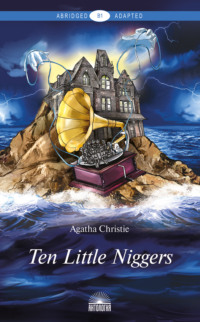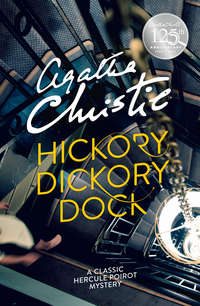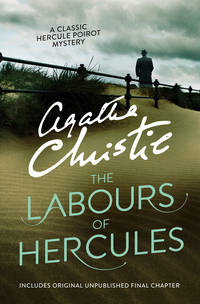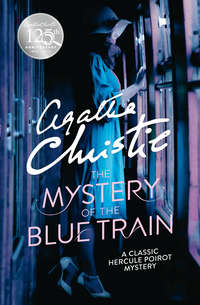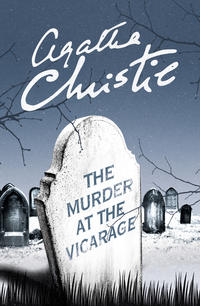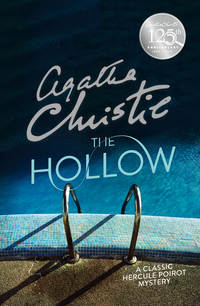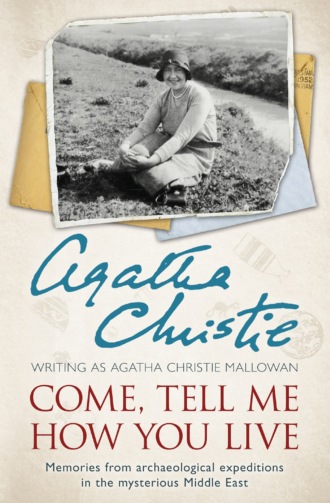
Полная версия
Come, Tell Me How You Live: An Archaeological Memoir

AGATHA CHRISTIE MALLOWAN
Come, Tell Me How You Live
With an Introduction
by Jacquetta Hawkes

Published by HarperCollinsPublishers Ltd
1 London Bridge Street
London SE1 9GF
www.harpercollins.co.uk
First published in Great Britain by
William Collins Sons & Co Ltd 1946
Copyright © Agatha Christie Mallowan 1946
Agatha Christie® copyright © Agatha Christie Limited. All rights reserved.
www.agathachristie.com
A catalogue record of this book is available from the British Library.
Cover photograph© Christie Archive Trust 2015
Cover design © HarperCollinsPublishers Ltd 2015
Agatha Christie asserts the moral right to be identified as the author of this work.
A catalogue copy of this book is available from the British Library.
This novel is entirely a work of fiction. The names, characters and incidents portrayed in it are the work of the author’s imagination. Any resemblance to actual persons, living or dead, events or localities is entirely coincidental.
All rights reserved under International and Pan-American Copyright Conventions. By payment of the required fees, you have been granted the non-exclusive, non-transferable right to access and read the text of this e-book on screen. No part of this text may be reproduced, transmitted, down-loaded, decompiled, reverse engineered, or stored in or introduced into any information storage and retrieval system, in any form or by any means, whether electronic or mechanical, now known or hereinafter invented, without the express written permission of HarperCollins.
Source ISBN: 9780008129460
Ebook Edition © July 2015 ISBN: 9780007487202
Version: 2017-04-11
To my husband, Max Mallowan; to the Colonel, Bumps, Mac and Guilford, this meandering chronicle is affectionately dedicated
Contents
Cover
Title Page
Copyright
Dedication
Introduction
A-Sitting on a Tell
Foreword
CHAPTER 1: Partant Pour la Syrie
CHAPTER 2: A Surveying Trip
CHAPTER 3: The Habur and the Jaghjagha
CHAPTER 4: First Season at Chagar Bazar
CHAPTER 5: Fin de Saison
CHAPTER 6: Journey’s End
CHAPTER 7: Life at Chagar Bazar
CHAPTER 8: Chagar and Brak
CHAPTER 9: Arrival of Mac
CHAPTER 10: The Trail to Raqqa
CHAPTER 11: Good-Bye to Brak
CHAPTER 12: ’Ain el ’Arus
Epilogue
Plate Section
Back Ads
Footnotes
Index
Also by Agatha Christie Mysteries
About the Publisher
Introduction
There are books that one reads with a persistent inner smile which from time to time becomes visible and occasionally audible. Come, Tell Me How You Live is one of them, and to read it is pure pleasure.
It was in 1930 that a happy chance had brought a young archaeologist, Max Mallowan, together with Agatha Christie, then already a well-known author. Visiting Baghdad, she had met Leonard and Katharine Woolley and accepted their invitation to stay with them at Ur where they had been digging for several seasons. Max, their assistant, was charged to escort Agatha homeward, sight-seeing on the way. Thus agreeably thrown together they were to be married before the end of the year and so to enter their long and extraordinarily creative union.
Agatha did not see her own renown as any bar to sharing in her husband’s work. From the first she took a full part in every one of Max’s excavations in Syria and Iraq, enduring discomforts and finding comedy in all such disasters as an archaeologist is heir to. Inevitably her personal acquaintance, who knew nothing of the mysteries of digging in foreign lands, asked her what this strange life was like—and she determined to answer their questions in a light-hearted book.
Agatha began Come, Tell Me How You Live before the war, and although she was to lay it aside during four years of war-work, in both spirit and content it belongs to the thirties. Like the balanced, bien élevée bourgeoise that she was, she did not think the tragedies of human existence more significant than its comedies and delights. Nor at that time was archaeology in the Middle East weighed down with science and laborious technique. It was a world where one mounted a Pullman at Victoria in a ‘big snorting, hurrying, companionable train, with its big, puffing engine’, was waved away by crowds of relatives, at Calais caught the Orient Express to Istanbul, and so arrived at last in a Syria where good order, good food and generous permits for digging were provided by the French. Moreover, it was a world where Agatha could make fun of the Arabs, Kurds, Armenians, Turks and Yezidi devil-worshippers who worked on the excavations as freely as she could of Oxford scholars, of her husband and herself.
The author calls her book, ‘small beer… full of everyday doings and happenings’ and an ‘inconsequent chronicle’. In fact it is most deftly knit together, making a seamless fabric of five varied seasons in the field. These began late in 1934 with a survey of the ancient city mounds, or tells, studding the banks of the Habur in northern Syria—its purpose being to select the most promising for excavation.
Max showed his sound judgement in choosing Chagar Bazar and Tell Brak out of the fifty Come, Tell Me How You Live examined, for both, when excavated during the four following seasons, added vastly to our knowledge of early Mesopotamia. Agatha, on her side, showed characteristic discipline by denying herself all archaeological particularities in her book, so preserving its lightness and consistency.
In the primitive and culture-clashing conditions of the time and place ‘everyday doings and happenings’ were sufficiently extraordinary to occupy the reader: men and machines were equally liable to give trouble, and so, too, did mice, bats, spiders, fleas and the stealthy carriers of what was then called Gippy tummy. Not only is episode after episode most amusingly told, but there emerges from the telling some excellent characterisation. If Agatha Christie the detective writer can be said to have taken characters out of a box, here in a few pages she shows how deftly she could bring individuals to life.
One interesting subject which the author, in her modesty, has not sufficiently emphasized is the very considerable part she played in the practical work of the expeditions. She mentions in passing her struggles to produce photographs without a darkroom and her labelling of finds, but that is not enough. When, later, I was fortunate enough to spend a week with the Mallowans at Nimrud, near Mosul, I was surprised how much she did in addition to securing domestic order and good food. At the beginning of each season she would retire to her own little room to write, but as soon as the pressure of work on the dig had mounted she shut the door on her profession and devoted herself to antiquity. She rose early to go the rounds with Max, catalogued and labelled, and on this occasion busied herself with the preliminary cleaning of the exquisite ivories which were coming from Fort Shalmaneser. I have a vivid picture of her confronting one of these carvings, with her dusting brush poised and head tilted, smiling quizzically at the results of her handiwork.
This remembered moment adds to my conviction that although she gave so much time to it, Agatha Christie remained inwardly detached from archaeology. She relished the archaeological life in remote country and made good use of its experiences in her own work. She had a sound knowledge of the subject, yet remained outside it, a happily amused onlooker.
That Agatha could find intense enjoyment from the wild Mesopotamian countryside and its peoples emerges from many of the pages of Come, Tell Me How You Live. There is, for one instance, her account of the picnic when she and Max sat among flowers on the lip of a little volcano. ‘The utter peace is wonderful. A great wave of happiness surges over me, and I realize how much I love this country, and how complete and satisfying this life is…’ So, in her short Epilogue looking back across the war years to recall the best memories of the Habur she declares: ‘Writing this simple record has not been a task, but a labour of love.’ This is evidently true, for some radiance lights all those everyday doings however painful or absurd. It is a quality which explains why, as I said at the beginning, this book is a pure pleasure to read.
JACQUETTA HAWKES
1983
A-SITTING ON A TELL
(With apologies to Lewis Carroll)
I’ll tell you everything I can
If you will listen well:
I met an erudite young man
A-sitting on a Tell.
‘Who are you, sir?’ to him I said,
‘For what is it you look?’
His answer trickled through my head
Like bloodstains in a book.
He said: ‘I look for aged pots
Of prehistoric days,
And then I measure them in lots
And lots of different ways.
And then (like you) I start to write,
My words are twice as long
As yours, and far more erudite.
They prove my colleagues wrong!’
But I was thinking of a plan
To kill a millionaire
And hide the body in a van
Or some large Frigidaire.
So, having no reply to give,
And feeling rather shy,
I cried: ‘Come, tell me how you live!
And when, and where, and why?’
His accents mild were full of wit:
‘Five thousand years ago
Is really, when I think of it,
The choicest Age I know.
And once you learn to scorn A.D.
And you have got the knack,
Then you could come and dig with me
And never wander back.’
But I was thinking how to thrust
Some arsenic into tea,
And could not all at once adjust
My mind so far B.C.
I looked at him and softly sighed,
His face was pleasant too…
‘Come, tell me how you live?’ I cried,
‘And what it is you do?’
He said: ‘I hunt for objects made
By men where’er they roam,
I photograph and catalogue
And pack and send them home.
These things we do not sell for gold
(Nor yet, indeed, for copper!),
But place them on Museum shelves
As only right and proper.
‘I sometimes dig up amulets
And figurines most lewd,
For in those prehistoric days
They were extremely rude!
And that’s the way we take our fun,
’Tis not the way of wealth.
But archaeologists live long
And have the rudest health.’
I heard him then, for I had just
Completed a design
To keep a body free from dust
By boiling it in brine.
I thanked him much for telling me
With so much erudition,
And said that I would go with him
Upon an Expedition…
And now, if e’er by chance I dip
My fingers into acid,
Or smash some pottery (with slip!)
Because I am not placid,
Or if I see a river flow
And hear a far-off yell,
I sigh, for it reminds me so
Of that young man I learned to know—
Whose look was mild, whose speech was slow,
Whose thoughts were in the long ago,
Whose pockets sagged with potsherds so,
Who lectured learnedly and low,
Who used long words I didn’t know,
Whose eyes, with fervour all a-glow,
Upon the ground looked to and fro,
Who sought conclusively to show
That there were things I ought to know
And that with him I ought to go
And dig upon a Tell!

Foreword
This book is an answer. It is the answer to a question that is asked me very often.
‘So you dig in Syria, do you? Do tell me all about it. How do you live? In a tent?’ etc., etc.
Most people, probably, do not want to know. It is just the small change of conversation. But there are, now and then, one or two people who are really interested.
It is the question, too, that Archaeology asks of the Past—Come, tell me how you lived?
And with picks and spades and baskets we find the answer.
‘These were our cooking pots.’ ‘In this big silo we kept our grain.’ ‘With these bone needles we sewed our clothes.’ ‘These were our houses, this our bathroom, here our system of sanitation!’ ‘Here, in this pot, are the gold earrings of my daughter’s dowry.’ ‘Here, in this little jar, is my make-up.’ ‘All these cook-pots are of a very common type. You’ll find them by the hundred. We get them from the Potter at the corner. Woolworth’s, did you say? Is that what you call him in your time?’
Occasionally there is a Royal Palace, sometimes a Temple, much more rarely a Royal burial. These things are spectacular. They appear in newspapers in headlines, are lectured about, shown on screens, everybody hears of them! Yet I think to one engaged in digging, the real interest is in the everyday life—the life of the potter, the farmer, the tool-maker, the expert cutter of animal seals and amulets—in fact, the butcher, the baker, the candlestick-maker.
A final warning, so that there will be no disappointment. This is not a profound book—it will give you no interesting sidelights on archaeology, there will be no beautiful descriptions of scenery, no treating of economic problems, no racial reflections, no history.
It is, in fact, small beer—a very little book, full of everyday doings and happenings.
AGATHA CHRISTIE MALLOWAN
Конец ознакомительного фрагмента.
Текст предоставлен ООО «ЛитРес».
Прочитайте эту книгу целиком, купив полную легальную версию на ЛитРес.
Безопасно оплатить книгу можно банковской картой Visa, MasterCard, Maestro, со счета мобильного телефона, с платежного терминала, в салоне МТС или Связной, через PayPal, WebMoney, Яндекс.Деньги, QIWI Кошелек, бонусными картами или другим удобным Вам способом.


